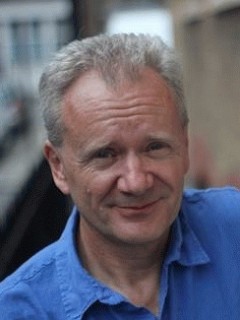Lurpak sells in 75 different countries but while the product is the same the brand had never established a consistent global positioning.
In 2007, the first year of launching the new, 'champion of good food' positioning, the brand achieved double digit growth, overtaking Flora to become category leader. Lurpak had grown by realising what was important to its audience: to make butter matter to people, you had to talk about what mattered to them — food.
But there was a problem replicating this success in other markets: with food an inherently local issue, how could Lurpak be the ‘champion of good food’ globally?
The brand was set an audacious challenge: develop one campaign which could both create a brand in new markets like Australia — to drive awareness and trial — and change perceptions of a brand established for 100 years, as in Denmark, to improve consideration.
To do this, we would need to find a universal truth about food as powerful in Saudi as it was in Russia. We didn’t know what we were looking for but we did know it had to be different. It had to escape the category standards to stand out sufficiently to inspire consumers.
Building the platform
Our innovative Positioning Web methodology underpinned our approach. Even though it is based on a standard ‘insight, benefit, reason to believe’ format, it is significantly different to the rigidity of typical positioning stimulus. Each Web board has a particular theme but allows for multiple insights, consumer benefits (rational and emotional) and reasons to believe. Each of these elements is ‘sprinkled’ around the board.
Crucially, this creative approach encourages deeper stimulation, allowing consumers multiple ways into the same area. The absence of any clear rational coherence means respondents are more open to looking for meaning and connections: they think harder. They can also reject individual elements without rejecting the whole idea. The process helps consumers articulate what is really meaningful to them.
We supplemented our Webs with ‘manifesto’ versions of the same positioning areas. Written (by Wieden & Kennedy) to give more free ranging, poetic evocations of the same area, these provided another way of illuminating what had the greatest potential to captivate.
Our global research partners (we covered seven countries) weren’t used to working in this way. Time had to be built into the process to coach them in this more free-form approach. Close collaboration throughout was important in ensuring ideas emerging from one market were followed up in the next and to properly understand the areas of difference and distinction. The lead researcher from Voodoo and the planner from W&K watched all the sessions and liaised closely with local moderators after each one.
This constant discussion between researcher and planner was a critical part of the process. The output had to not only be based on real insight but also be a springboard to great creative work.
Research output
This was the proper use of qualitative research: analysis feeding creative thinking. We weren’t looking for a winner from pre-set ideas, rather to learn enough to inspire a brand platform with real, universal emotional heft.
We saw past different languages and tastes, to the one thing that united them as food lovers: the visceral joy experienced while cooking and the ‘moment of alchemy’ when raw ingredients transform into finished products.
A multi-sensorial moment of sights, sounds, smells and textures. It wasn’t just good food we needed to talk about, it was the creation of good food. Good food was divisive, cooking universal. And butter was key: you couldn’t make a great cake without butter to bind it all or a sauce without butter to enhance the taste. Butter was the food lover’s ally in this joyous moment.
The strategy — the heroic cook
This moment of creation became the anchor point for our story. We would drive growth by telling the story of the food lover as a cook, making heroes of them and creating a brand world that they felt intrinsically connected to.
The creative idea: from hero to magician
With the cook cast as hero, the kitchen was their miraculous kingdom. Ingredients were transformed; states were changed as things were mixed, moulded, melted, bubbled and risen. It was a moment for our food lover to realise their creative potential, a place of miracles and failures, a place where they were powerful, alive and special.
And so Weave Your Magic was born: a campaign about the magical power of the cook to transform the ordinary into the extraordinary.
Effects
WYM has been rolled out in six markets, with plans to roll out to another seven by 2016. The largest global roll out in the brand’s 100 year history.
New market: Australia
Since campaign launch in May 2013, Lurpak has seen the fastest growth in its market history, far outpacing both value and volume growth for the total market and at a higher rate than any individual competitor.
Established market: Sweden
Launched in September 2013, WYM has proved it can improve brand fortunes in an established market. Data shows the ad created brand appeal and confirmed the brand’s alignment with their beliefs (‘passionate about good food’), increasing their consideration of the brand, which in turn corresponded with significant sales uplift.
Conclusion
Weave Your Magic shows how true audience insight can be used to cross cultural divides, even in the most local of categories like food and to straddle completely different stages of market growth, from new to established. It is proof that with the right insight global work can be locally relevant, creatively engaging and commercially successful.


